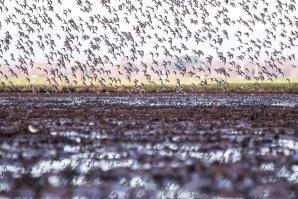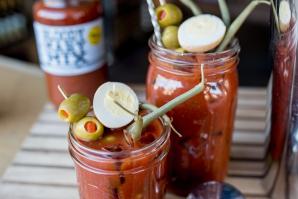
Mind Boosters
Studies show certain foods preserve cognition into the twilight years... but can brain foods make you smarter today?
As we get older and become more at risk for Alzheimer’s, a certain type of diet can boost our cognitive potency. Decades ago, science proved food can impact our heart health. Why should the brain be different?

Infographic:Your Body on Good Food
Want to help your heart and brain? Eat better
With Baby boomers aging, nutrition experts urge healthy eating habits to ward off memory and cognitive loss, and keep the heart healthy.

More Bang for Your Duck
After a rough few years, Sacramento Valley rice farmers are supplementing crop profits with environmental stewardship
Having a robust agricultural industry has meant accommodating crops and livestock by forcing out wildlife. Before farming came to the region 150 years ago, waterbird habitat was primarily provided by wetlands. Now managed wetlands make up only about one-third of their habitat in California and rice fields comprise nearly 60 percent.

Farm-to-School Programs Make for Healthier Children
Federally-funded programs translate to sustainable farms and healthier children. Yet, despite improved efforts, funding remains lower than demand. In a state that produces half of the nation’s fruits and veggies, California stands to benefit by funding these programs.

New Publishers Relaunch Edible Sacramento Magazine
Edible Sacramento is back in print with a March/April edition that might be headlined “Under New Ownership.” The bimonthly food magazine is now owned and published by Reno residents Amanda Burden and Jaci Goodman.

A Healthy Bottom Line
Once considered trendy, vegetarian-friendly restaurants are becoming the new norm in Sacramento
Today, Sacramento is home to nearly a dozen vegetarian and vegan restaurants, a shift that’s reflective of evolving dietary trends nationwide.

Startup of the Month: Foodfully
Davis-based startup reminds you to put your food in your belly, not landfills
By linking with loyalty cards and tracking purchases (by scanning receipts), Foodfully knows what food you buy and gives an estimate about how long it may last, then sends notifications before that estimated date. These alerts help consumers avoid wasting forgotten food

Nicole Rogers on Telling the Story of Food
Sacramento’s farm-to-fork director leaves for job at Nugget Markets
Rogers has hung up her fork and picked up a grocery basket. She will be Nugget Markets’ first director of marketing and communications, serving stores in 12 cities in the Northern California region.

Co-Owner of Blackbird Kitchen Joins Oak Park Brewing
Chef Carina Lampkin discusses her plans for the popular brand
Lampkin recently accepted a new position as the vice president of restaurant operations at Oak Park Brewing Company. We sat down with Lampkin to see what motivated her to make the move.

Preserved to Perfection
Preservation & Co. offers customers a new take on an old tradition
Jason Poole accidentally came across what would become his next career by way of a national contest. Poole submitted a Bloody Mary recipe, and before he knew it he was making his way to New York City as a finalist for the 2012 Absolut Best Bloody Mary in America contest.


